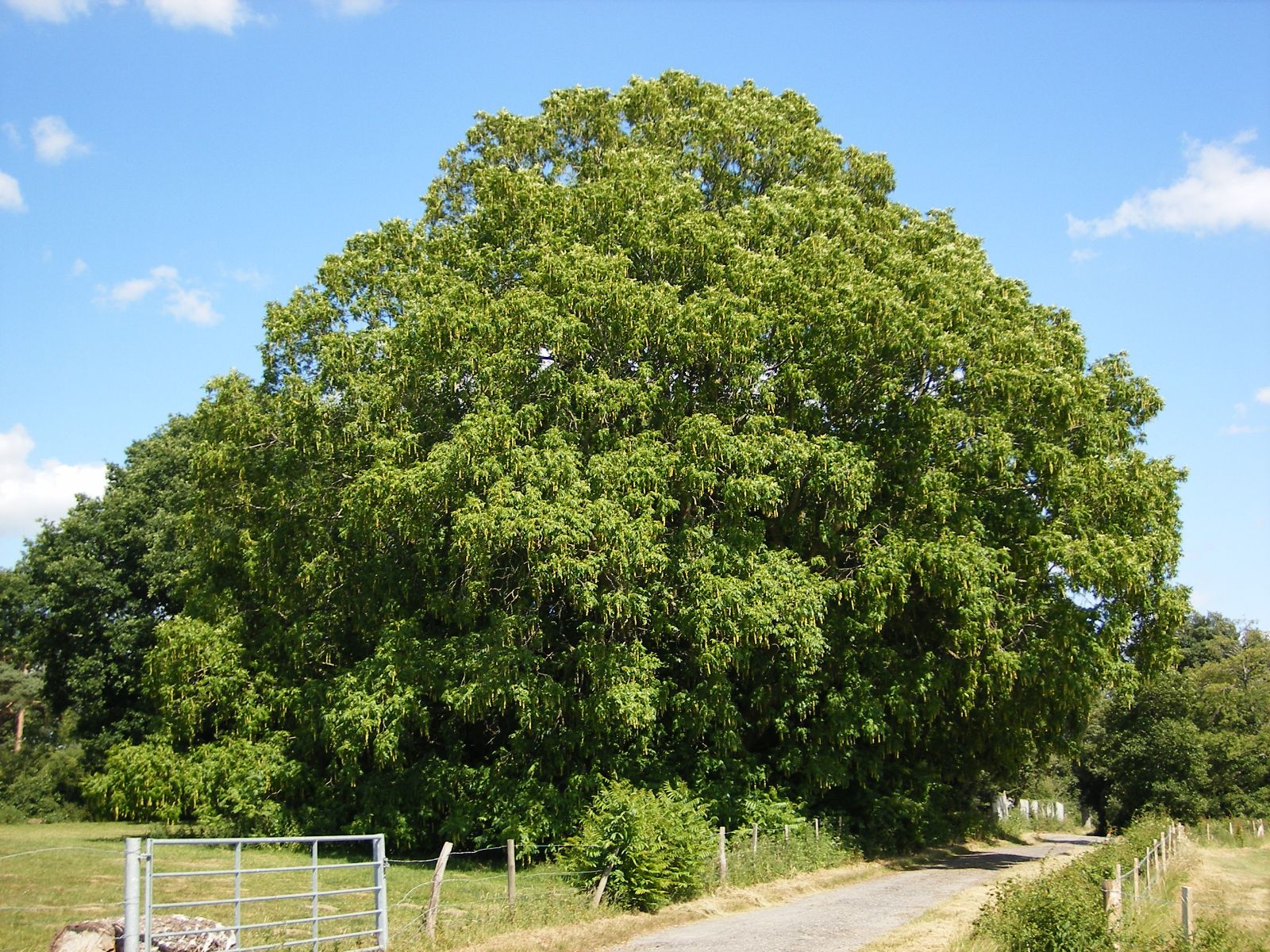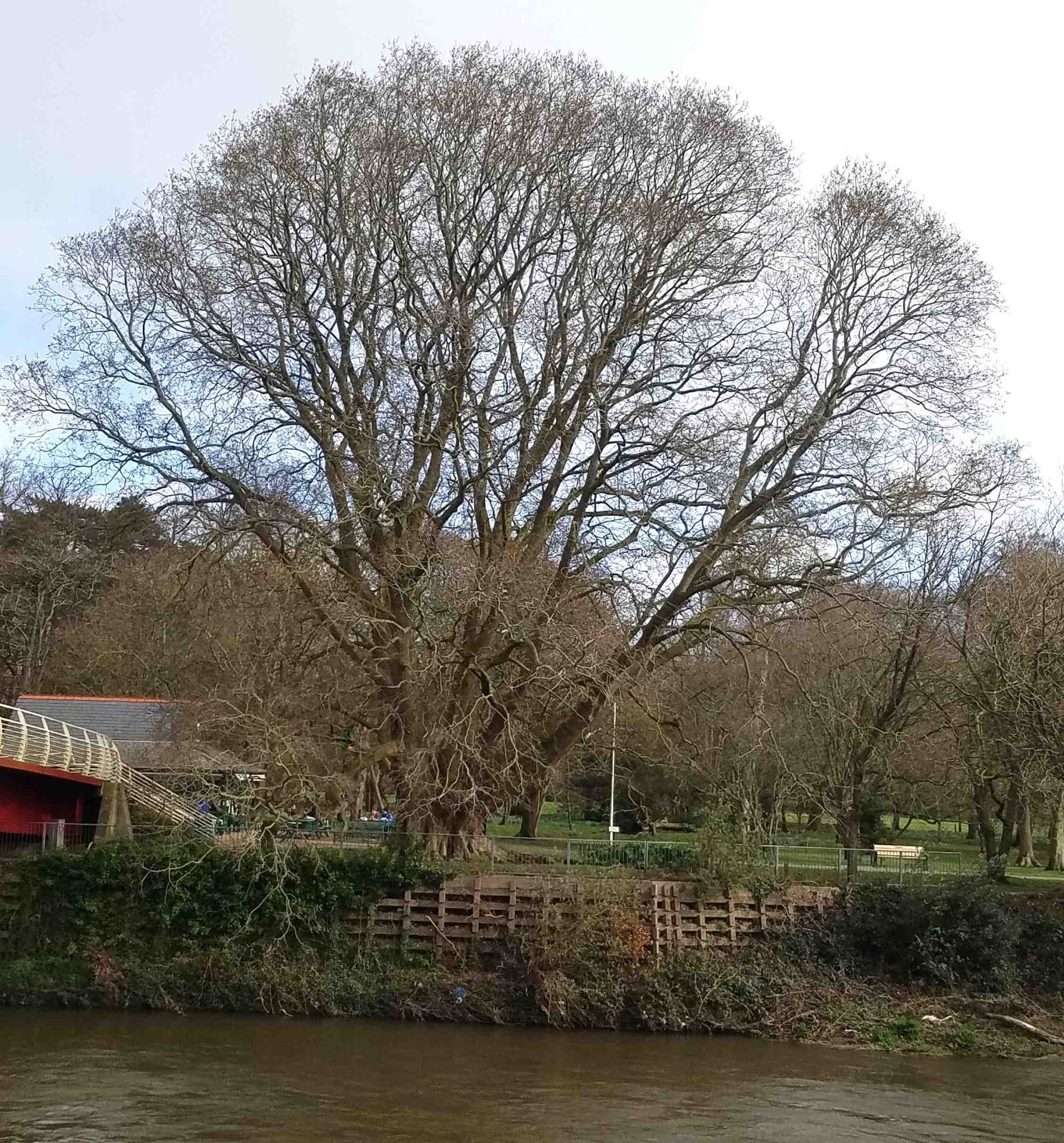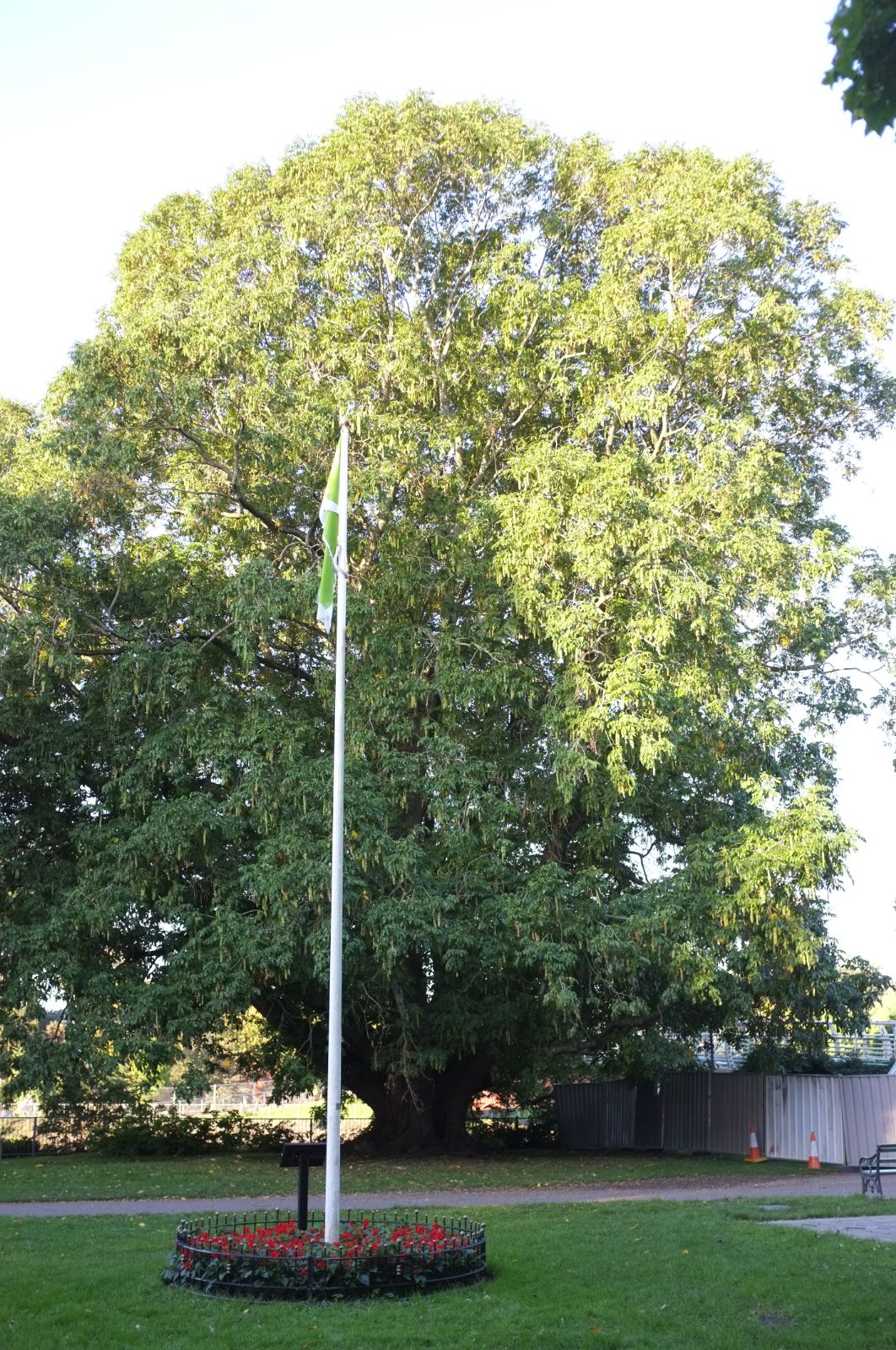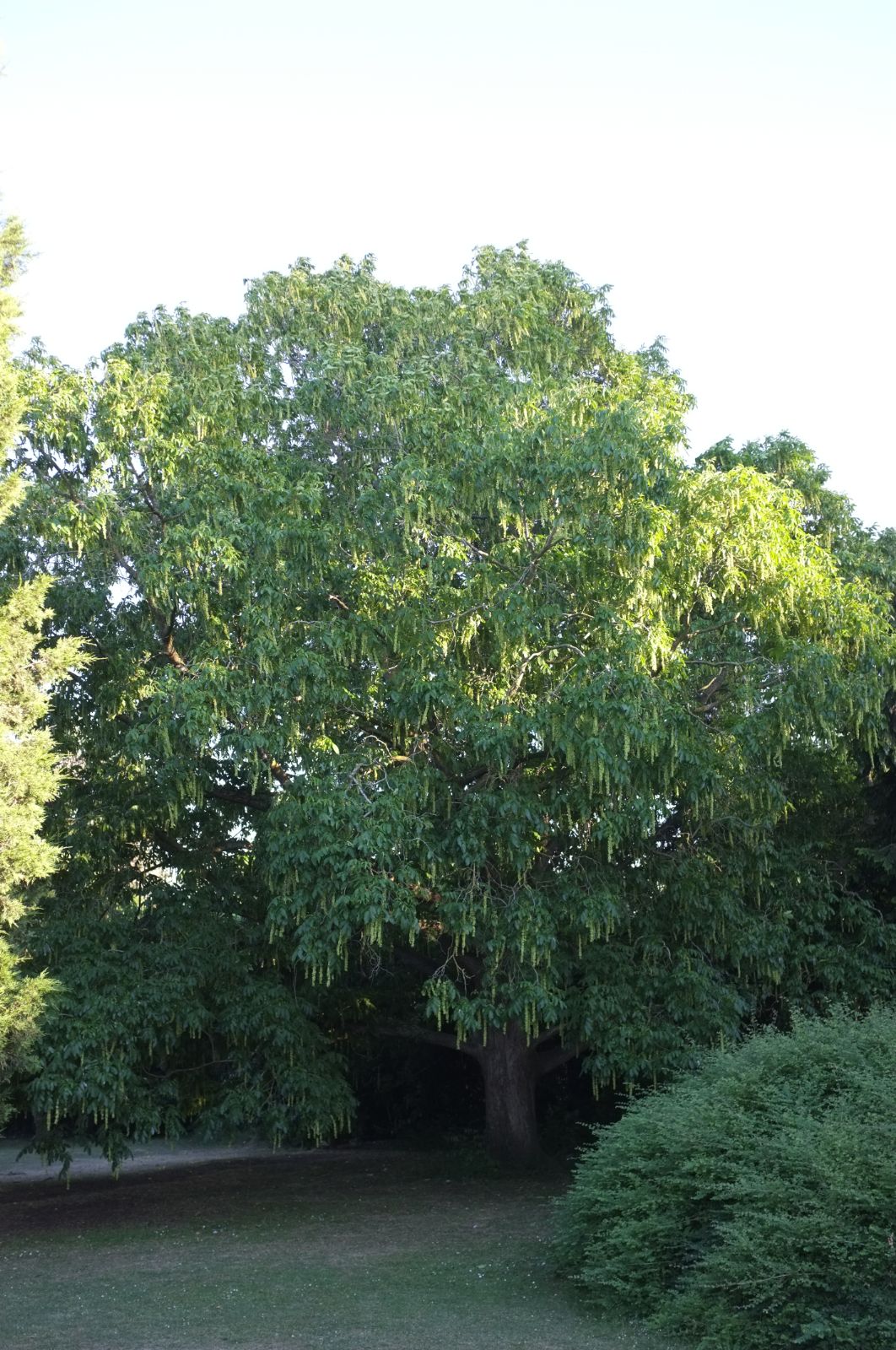Pterocarya × rehderiana
Sponsor
Kindly sponsored by
a member of the International Dendrology Society
Credits
Julian Sutton (2019)
Recommended citation
Sutton, J. (2019), 'Pterocarya × rehderiana' from the website Trees and Shrubs Online (treesandshrubsonline.
Genus
- Pterocarya
- P. stenoptera × P. fraxinifolia
Hybrids between P. stenoptera and P. fraxinifolia, originating in cultivation and intermediate between the parents. In his original description, based on a single clone, Rehder (1903) gives the following distinguishing features. Rachis of leaf winged (unlike fraxinifolia), wing narrower than in stenoptera, and usually absent between the lowest two pairs of leaflets (in stenoptera it often extends to the upper part of the petiole), sparsely hairy beneath at first. Leaflets larger and more pointed than in stenoptera (hence tending towards fraxinifolia), pubescent on the veins beneath. Nut wings shorter but wider than in stenoptera, narrower than in fraxinifolia, 20 mm or less × 8 mm or more. Vein pattern of nut wings tend towards fraxinifolia (in stenoptera they appear parallel and closely packed, while in the broader wing of fraxinifolia they appear more sparse, with more obvious branching).
USDA Hardiness Zone 6-8
RHS Hardiness Rating H6
A fast growing, vigorously suckering, potentially large tree, P. × rehderiana is not for the smaller garden nor for the faint-hearted grower. Best in moist ground near rivers or stream, its ultimate size has surely yet to be discovered.
It was first recognised when the Arnold Arboretum, MA, grew seed of P. stenoptera sent from Alphonse Lavallée’s Arboretum de Segrez, France, in 1879 (Anderson 1933; Bean 1976). Unlike earlier accessions of P. stenoptera, it proved hardy in the Boston area, and did not match that species’ appearance. Working at the Arnold, Rehder (1903) described the hybrid, while it was named in his honour by Schneider (1906).
There is at least one other confirmed early occurence. Bean (1976) notes that ‘at Borde Hill, West Sussex, there are also some spontaneous forms of P. × rehderiana, raised in the 1920s from seed of P. fraxinifolia. The presumed seed-parent grows a few yards from two specimens of P. stenoptera, both of which flower most years.
The Arnold tree in particular was distributed by seed (this is a fertile hybrid) and clonally. Living material was brought to Kew in 1908 (Bean 1976); the larger of the two specimens then planted was measured at 23 m × 141 cm in 2010 (The Tree Register 2019).
Other notable specimens in Britain include one planted on the bank of the tidal River Taff in Bute Park, Cardiff, in 1947 or after (27 m × 216 cm, 2013) and another at Westonbirt, Gloucestershire, (25 m × 169 cm, 2014 – The Tree Register 2019). The former is a tall, rather willow-like tree, whose suckers are regularly cut; the latter has thick, low limbs and is surrounded by a thicket of suckers (pers. obs. 2018).
A tree at the Jardí Botànic Històric, Barcelona, was estimated at 32 m tall in 2017, while there is a very large multistemmed specimen at the Von Gimborn Arboretum, Doorn, The Netherlands (monumentaltrees.com 2019). The original trees at the Arnold Arboretum, augmented by seedlings and vegetatively propagated specimens, have not attained such great sizes, but cleared of suckers and growing near to a major thoroughfare they make a wonderful sight in fruit on a sunny autumn day (pers. obs. 2003).
Identification remains a problem. Several known specimens, including the Cardiff champion, were at one time labelled P. fraxinifolia; others probably remain unrecognised. Furthermore, it is entirely possible that F2 seedlings may include backcrosses to one or the other parent, or that seed from cultivated fraxinifolia may have crossed not with stenoptera but with a hybrid. There is possibility for confusing introgressive hybridisation here.
In practice, hybrids are primarily recognised by the winged rachis in a tree, which otherwise looks ‘wrong’ for stenoptera. There is no a priori reason why all hybrids, backcrosses in particular, should show this character. For example, examination of a group of young trees at Howick Hall labelled P. fraxinifolia, from the same cultivated seed batch, revealed that one of them had a winged rachis (pers. obs. 2019). This was presumably a hybrid, but what are the others? Caution, open-mindedness and wider observation are required on this matter.







